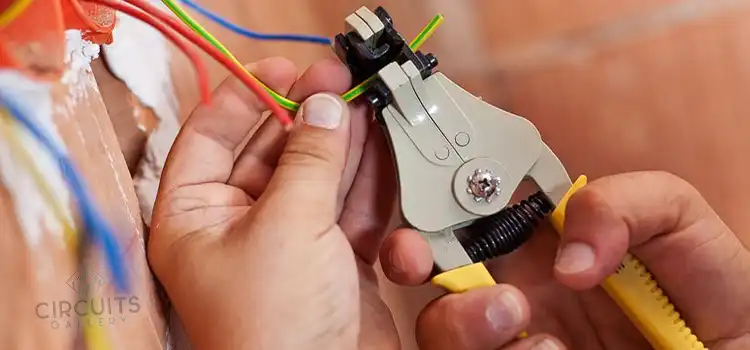Does Low Voltage Wiring Need to Be in Conduit? | Explained
In the intricate world of electrical wiring, the question of whether low-voltage wiring needs conduit sparks a debate among electricians and homeowners alike.
This article delves into the depths of this electrical conundrum, standards, and factors that influence the need for conduits and provides a comprehensive guide to making informed decisions.

Defining Low Voltage
Wiring Low voltage wiring provides electricity to devices and systems that don’t require the 120/240-volt current used for lighting and appliances. Low voltage systems commonly employ 12V or 24V and serve purposes like landscape lighting, doorbells, and thermostats.
Network and coaxial cables also qualify as low-voltage wiring, operating at even lower voltages to transport data and video signals.
The Role of Conduit
Conduit consists of tubes or pipes made of plastic or metal that fully contain electrical wires, protecting them from damage while simplifying pulling during installation.
Conduit organizes wiring and provides fire resistance. It also shields cables from electromagnetic interference (EMI), radio frequencies, and environmental exposure.
Low Voltage Wiring Standards
The National Electrical Code (NEC) classifies low voltage wiring as Class 2 circuits rated for 5 amps or less operating at 30V or below. Communication cables fall under Class 3 guidelines. Standards on low-voltage wiring are as follows:
Outdoor buried wiring
Low-voltage wiring must be buried at least 6 inches deep. Wiring that transitions from underground to above ground must be protected in conduit from the required cover depth or 18 inches to its termination point above ground.
Plenum Spaces
Open ceilings with HVAC systems often permit low-voltage wiring without conduit.
Network Cabling
Plenums may waive conduit for bundled low-voltage data cables supported independently every 4-1/2 feet.
Avoiding Code Violations
Common low-voltage wiring mistakes violating NEC rules include:
- Failure to maintain separation distances between low and high-voltage wiring
- Omitting conduit for low voltage cables routed through walls
- Direct burial of landscape lighting wires without conduit
- Exceeding maximum low voltage wiring fill percentage in conduit
By understanding code intent and consulting inspectors, contractors can feel confident their low-voltage wiring meets safety objectives without overspending on unnecessary conduit.
Factors Influencing the Need for Conduit
Whether low voltage wiring requires conduit depends on various factors:
- Electrical Codes: Local regulations may mandate conduit for some low-voltage wiring situations. Outdoor installations frequently require conduit.
- Exposure: Wiring exposed to physical damage, moisture, or temperature extremes needs a conduit to prevent failure. Direct burial also demands conduit.
- Aesthetics: In finished areas, conduit neatly conceals wiring.
- EMI Protection: Conduit shields low voltage wiring from EMI emitted by nearby high voltage power cables.
Weighing the Pros and Cons
Utilizing conduit to safeguard low-voltage wiring carries notable advantages but also some drawbacks to consider:
Pros
- Physical protection from contact damage
- Resistance to moisture, UV rays, oils, dirt
- Hardened fire resistance
- Mitigates EMI interference
- Allows future cable changes
Cons
- Rigid pathways complicate wire-pulling
- Higher material expense
- Labor-intensive installation
- Permanent mounting restricts changes
Conduit Alternatives for Low Voltage Wiring
In situations where conduit is not strictly required, alternative protective measures can be employed:
- Cable Jackets: Certain low-voltage cables feature durable jackets that provide some level of protection against physical damage.
- Raceways: Raceways, similar to conduits but without a rigid structure, can be used to organize and protect low-voltage wiring in exposed areas.
The decision often presents a choice between heightened safety and faster installation without conduit. Thankfully the NEC delineates standards for critical areas while permitting flexibility elsewhere.
Common Low Voltage Conduit Applications
Here are some typical situations where conduit shields low-voltage wiring:
- Structured Cabling Conduit: Network, coaxial, and phone cables routed through walls often mandate protective conduit. Plenum ceilings usually waive conduit requirements for suspended low-voltage cabling.
- Landscape Lighting Conduit: The direct burial requirements for low-voltage landscape lighting wiring make conduits indispensable for safety and durability. Rigid non-metallic conduit with waterproof fittings provides reliable below-grade wiring protection.
- Doorbell Wiring Conduit: Low voltage doorbell wiring Smust follows NEC requirements for conduit when passing through exterior walls or any locations subject to physical damage or moisture infiltration.
- Thermostat Wiring Conduit: Despite their low 24VAC operating voltages, thermostat cables should receive conduit protection when running through walls or areas prone to contact or environmental threats.
FAQs: Frequently Asked Questions and Answers
- When is conduit mandatory for low-voltage wiring?
Answer: Conduit becomes essential for shielding low voltage wiring in locations prone to physical damage, moisture, extreme temps, or EMI. Direct burial also requires conduit.
- What type of conduit should I use for low-voltage wiring?
Answer: PVC conduit is a common and affordable choice for low-voltage wiring due to its durability and ease of installation.
- How to install a conduit for low-voltage wiring?
Answer: Proper conduit installation involves careful planning, accurate measurements, and adherence to electrical codes. Consult a qualified electrician for guidance on safe and proper installation techniques.
To Conclude
The decision of whether to enclose low-voltage wiring within the conduit is not a one-size-fits-all answer. It requires careful consideration of the wiring’s location, exposure, and aesthetic considerations.
By understanding the factors that influence the need for conduit, electricians and homeowners can make informed decisions that prioritize safety, functionality, and visual appeal. Remember, when it comes to electrical wiring, safety should always be the top priority.
- Defining Low Voltage
- The Role of Conduit
- Low Voltage Wiring Standards
- Avoiding Code Violations
- Factors Influencing the Need for Conduit
- Weighing the Pros and Cons
- Conduit Alternatives for Low Voltage Wiring
- Common Low Voltage Conduit Applications
- FAQs: Frequently Asked Questions and Answers
- To Conclude
Subscribe to our newsletter
& plug into
the world of circuits